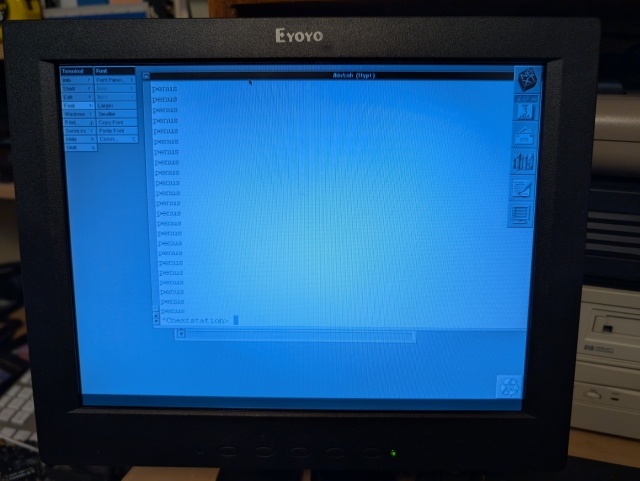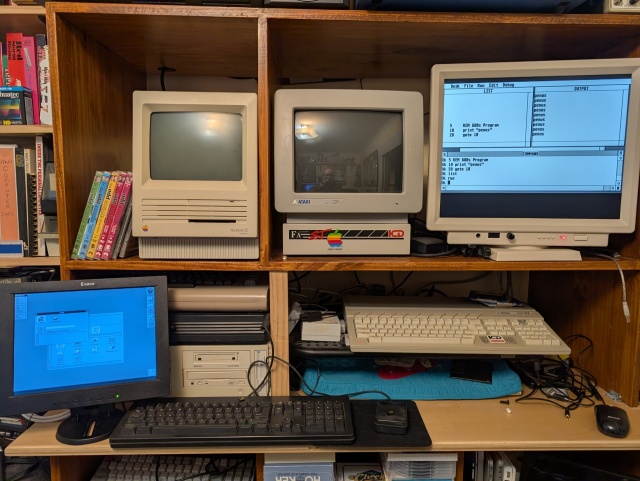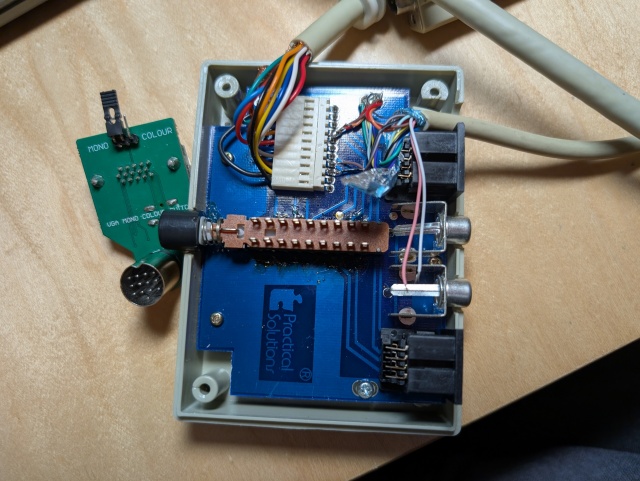Holy cow did I have a good couple of hours in HengeWorld.
When I got home from lunch around 3 my wife handed me the NuIO board we ordered for the NeXT machine. This was a very welcome surprise. I expected just a board and it came in a very nice 3D printed case. I cabled it up and plugged it into the CheckMate IPS monitor I've been doing battle with for a year.
With extremely low expectations, I hit the soft-power button on the keyboard.
Fired right up, straight to a desktop, looked FRIGGIN' gorgeous. Sharp. This machine, while frustrating to assemble due to the "unique" decisions of Team NeXT in 1989, has been remarkably reliable. Once I understood exactly what I needed (non-ADB keyboard / mouse), spent a bunch of money, it all just worked great. Even worked great on my 4:3 Eyoyo monitor though it's understandably not as nice is the 17" CheckMate.

I ported GOB's Program to csh
So this spurred me to try some ST stuff I've had in mind too. I wanted to try and wire straight into a Mono/Color ST switchbox with a sacrificial VGA cable and see if I can just make a color/Mono VGA switcher. I don't know if the switch is going to work but I just soldered straight onto the pins from the inbound ST cable and...

The ST looks great, there's interference like if there's nothing on the screen, but once programs were running I didn't notice it at all. It all feels very much as I remember.
I chalk that noise up to my test setup:

Turns out the $5 or whatever Exxos (* I can't recall if Exxos actually made this or not) ST->VGA dingus I got was the culprit all along for years now. Oh well. Maybe I can rescue one or both of the 13 pin DIN and female VGA connector off of it.
After the OSSC thing didn't work out I started really bumming pretty hard on this whole project. Then Youtube recommended this awesome BackOfficeChannel video from 8 years ago which made it click in my brain that I can just straight up solder a VGA cable to an Atari cable and any SVGA monitor should work with it. And I remembered that Len had this Mono/Color switchbox and I decided I want to try to recreate that workflow and keep this machine as original feeling as I can.
It took me an hour to map out which conductors went to which pin on the ST and VGA cables and how the diagrams I was looking at are oriented. But man that looks nice even on the garbage cable I hacked together.
This was 3 hours well spent.